Tight Sportswear – Comfort Versus Performance
The choice between tight and loose sportswear has long sparked debate among athletes, trainers, and fitness enthusiasts. This conversation is not just about style but about how clothing interacts with physiology, movement, and performance. Tight sportswear can reduce muscle oscillation, improve circulation, and enhance proprioception. Loose clothing, on the other hand, may allow for better airflow and comfort during low-intensity activities. The decision often depends on the sport, the intensity, and the individual’s goals. In high-impact or precision-based sports, tight gear may offer measurable advantages. In yoga or casual walking, loose garments might feel more appropriate. Understanding these nuances helps athletes make informed choices.

Muscle Support And Stability – Compression As A Performance Tool
Tight sportswear provides targeted compression that stabilizes muscles during dynamic movement. This stabilization reduces muscle vibration, which can lead to fatigue and microtrauma. Compression garments also enhance blood flow, delivering oxygen more efficiently to working muscles. Athletes often report feeling more “locked in” when wearing snug gear, especially during sprints or lifts. The psychological effect of feeling supported can translate into better form and reduced injury risk. Tight clothing also aids in postural alignment, helping athletes maintain correct technique. In contrast, loose garments may shift or bunch, disrupting movement patterns. Compression wear is particularly beneficial in sports requiring explosive power or endurance. It can also assist in recovery by reducing swelling and promoting circulation. These physiological and psychological benefits make tight gear a strategic choice for serious training.
| Benefit | Tight Sportswear | Loose Sportswear |
|---|---|---|
| Muscle Stabilization | High | Low |
| Circulation Enhancement | Strong | Minimal |
| Posture Support | Consistent | Variable |
| Movement Disruption | Low | Moderate |
| Fatigue Reduction | Noticeable | Limited |
Temperature Regulation And Sweat Management – Fabric Matters
Modern tight sportswear often incorporates moisture-wicking fabrics that pull sweat away from the skin. This helps regulate body temperature and prevents chafing. Loose clothing may trap moisture, especially if made from cotton or non-technical fabrics. Tight garments also dry faster, reducing discomfort during long workouts. The close fit allows for better thermal regulation in cold environments, acting as a second skin. In hot climates, breathable compression gear can still outperform loose clothing if designed with mesh zones and ventilation panels. Sweat management is critical for endurance athletes, where overheating can impair performance. Tight gear also reduces friction between skin and fabric, minimizing irritation. Loose garments may flap or shift, causing distraction or discomfort. The choice of fabric and fit directly impacts how the body handles heat and moisture. Athletes should consider climate and intensity when selecting gear.
Key Considerations For Sweat And Temperature Control
- Moisture-wicking materials are more common in tight sportswear
- Tight gear dries faster and reduces skin irritation
- Loose clothing may retain sweat and increase chafing risk
- Compression wear adapts and helps maintain core temperature in colder conditions
- Breathable tight garments can outperform loose ones in heat
- Fabric technology matters more than fit alone
- Tight clothing minimizes friction during repetitive motion
- Loose garments may flap and distract during high-speed movement
- Sweat control affects endurance and comfort
- Climate and sport type should guide clothing choice
Aerodynamics And Speed – Streamlining Movement
In sports where speed matters, tight clothing offers aerodynamic advantages. Cyclists, sprinters, and swimmers rely on gear that reduces drag and allows for fluid motion. Loose garments can catch wind or water, slowing the athlete down. The streamlined fit of compression wear enables smoother transitions and less resistance. Even in gym settings, tight gear can improve agility by staying close to the body. This is especially important in HIIT or plyometric training. Tight clothing also allows coaches to observe form and technique more clearly. Loose garments may obscure movement, making corrections harder. The psychological edge of feeling “fast” in tight gear can boost confidence. Athletes often report better focus and rhythm when wearing snug apparel. These aerodynamic benefits are not just for professionals—they apply to anyone seeking efficiency in motion.
| Sport Type | Preferred Fit | Reason |
|---|---|---|
| Cycling | Tight | Reduces wind resistance |
| Swimming | Tight | Minimizes water drag |
| Sprinting | Tight | Enhances stride efficiency |
| Yoga | Loose | Allows for relaxed movement |
| Weightlifting | Tight | Supports posture and alignment |
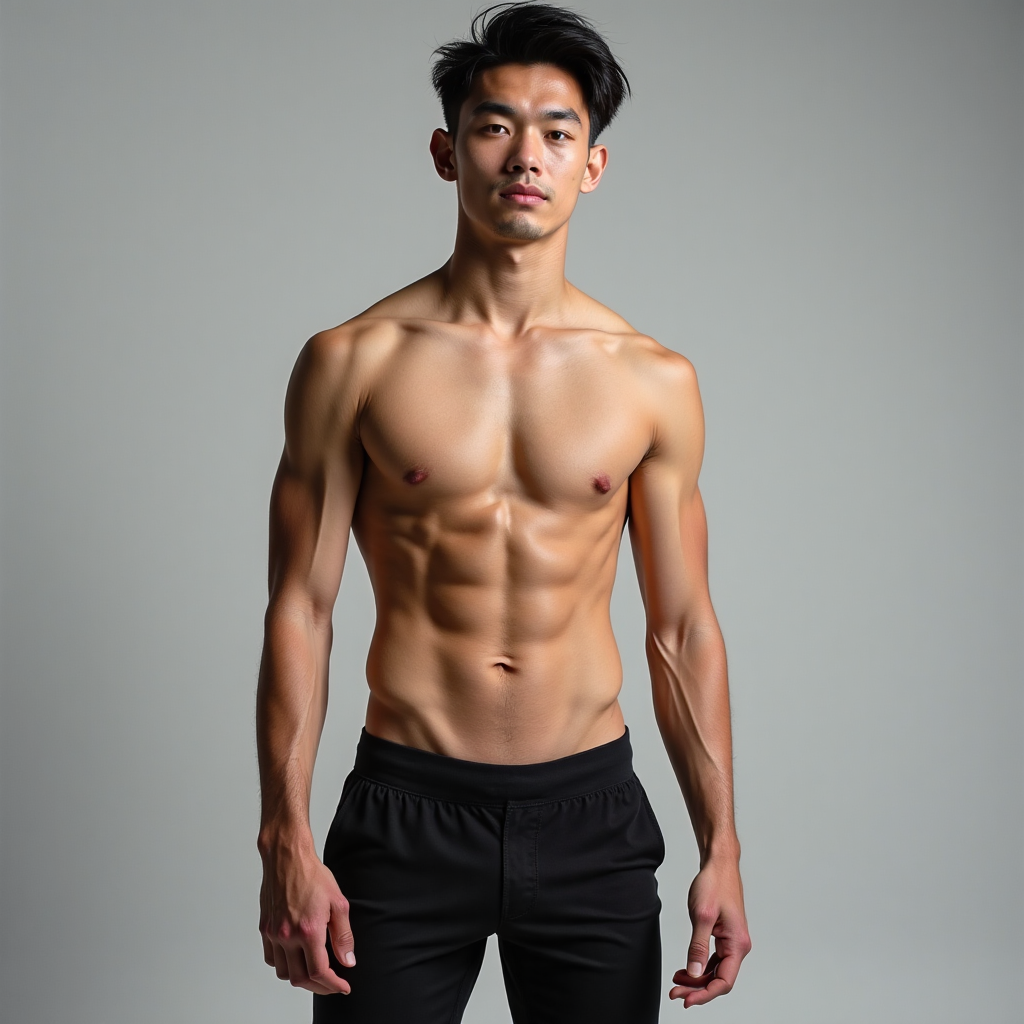
Injury Prevention And Recovery – Strategic Compression Benefits
Tight sportswear plays a crucial role in injury prevention and post-activity recovery. Compression garments can reduce the risk of strains by supporting joints and muscles during high-impact movements. They also help maintain proper alignment, which is essential for avoiding overuse injuries. During recovery, tight gear promotes lymphatic drainage and reduces inflammation. Athletes recovering from sprains or muscle soreness often use compression sleeves or tights to accelerate healing. Loose clothing lacks this targeted support and may allow excessive movement that worsens injuries. The snug fit of tight gear also encourages mindfulness in movement, reducing careless form. Recovery-focused compression wear is often used in physiotherapy and rehabilitation settings. It’s not just about performance—it’s about long-term health. The strategic use of tight clothing can extend an athlete’s career and reduce downtime. This makes it a valuable tool in both training and recovery phases.
| Recovery Benefit | Tight Clothing | Loose Clothing |
|---|---|---|
| Muscle Alignment | Strong | Weak |
| Inflammation Reduction | Effective | Minimal |
| Lymphatic Drainage | Supported | Unsupported |
| Injury Risk | Lowered | Higher |
| Rehabilitation Use | Common | Rare |
Body Awareness And Movement Precision – Enhancing Proprioception
Tight sportswear enhances proprioception—the body’s ability to sense its position and movement. This heightened awareness helps athletes maintain better form and execute movements with precision. Compression garments act as tactile feedback tools, reminding wearers of their posture and alignment. This type of sportswear is especially useful in disciplines like gymnastics, dance, or martial arts. Loose clothing may obscure body lines and reduce sensory feedback. Tight gear also helps athletes feel more connected to their movements, improving coordination. The psychological effect of “feeling the body” can lead to better performance and fewer mistakes. Coaches often prefer tight clothing for training because it reveals technique flaws. Athletes can self-correct more easily when they can feel and see their form. This sensory advantage is subtle but powerful. It’s not just about looking streamlined—it’s about moving with intention and control.
Proprioception And Movement Benefits Of Tight Gear
- Enhances body awareness during dynamic motion
- Provides tactile feedback for posture correction
- Improves coordination and movement precision
- Useful and durable in form-sensitive sports like dance and gymnastics
- Allows coaches to observe technique clearly
- Encourages self-correction and mindful movement
- Reduces risk of misalignment and injury
- Strengthens connection between mind and muscle
- Supports training in balance and agility
- Makes movement more intentional and efficient
Durability And Fit Consistency – Long-Term Wear Advantages
Tight sportswear often maintains its shape and fit better over time. High-quality compression garments are designed to withstand repeated use and washing without stretching out. Loose clothing may sag, shrink, or lose its structure, affecting performance and comfort. Tight gear also resists bunching or riding up during movement. This consistency is important for athletes who train daily and rely on gear that performs reliably. Durable tight clothing reduces the need for frequent replacements, saving money and reducing waste. Fit consistency also supports routine—athletes know how their gear will behave. Loose garments may vary in fit depending on brand or fabric, introducing unpredictability. Tight gear is engineered for stability and longevity. This makes it a practical choice for serious athletes and fitness professionals. The investment in quality compression wear pays off in durability and performance.
| Durability Factor | Tight Gear | Loose Gear |
|---|---|---|
| Shape Retention | Strong | Weak |
| Resistance To Shrinking | High | Low |
| Fit Consistency | Reliable | Variable |
| Bunching During Motion | Minimal | Frequent |
| Replacement Frequency | Lower | Higher |
Psychological Edge And Confidence – Feeling Ready To Perform
Tight sportswear can boost confidence and mental readiness. The snug fit often creates a sense of preparedness and focus. Athletes report feeling more “in the zone” when wearing gear that hugs the body. This psychological edge can translate into better performance, especially in competitive settings. Tight clothing also enhances body aesthetics, which may improve self-image and motivation. Loose garments may feel casual or unstructured, reducing the sense of athletic purpose. The ritual of putting on compression gear can signal the start of serious training. This mental shift is part of performance psychology. Feeling supported physically can lead to feeling empowered mentally. Tight gear becomes part of the athlete’s identity and routine. It’s not just about function—it’s about mindset. The confidence boost from tight clothing is real and impactful.
Confidence And Mental Readiness Factors
- Creates a sense of focus and discipline
- Enhances body aesthetics and self-image
- Signals readiness for performance
- Supports mental routines and rituals
- Reduces distractions from shifting garments
- Encourages commitment to training
- Builds athlete identity and pride
- Improves motivation and drive
- Reinforces physical and mental alignment
- Helps athletes feel “locked in”
Layering And Versatility – Adapting To Conditions And Training Styles
Tight sportswear offers superior layering potential, especially in variable weather or multi-phase workouts. Compression garments can serve as base layers under looser outerwear, allowing athletes to adapt quickly to changing conditions. This versatility supports warm-ups, cooldowns, and transitions between indoor and outdoor environments. Loose clothing may be harder to layer effectively, often bunching or restricting movement when worn over other garments. Tight gear also integrates well with accessories like knee sleeves, ankle supports, or harnesses. Athletes in climbing, CrossFit, or obstacle racing benefit from gear that stays in place and doesn’t interfere with equipment. The adaptability of tight clothing makes it ideal for hybrid training styles. It also simplifies packing and travel, reducing bulk. Versatile layering supports both performance and practicality. Athletes can customize their gear setup without sacrificing comfort or mobility. This makes tight sportswear a strategic choice for dynamic routines.
| Layering Feature | Tight Gear | Loose Gear |
|---|---|---|
| Base Layer Compatibility | Excellent | Limited |
| Equipment Integration | Seamless | Disruptive |
| Weather Adaptability | High | Moderate |
| Packing Efficiency | Compact | Bulky |
| Multi-Phase Training Use | Ideal | Inconsistent |
Visual Feedback And Technique Correction – Revealing Movement Patterns
Tight sportswear allows athletes and coaches to observe movement patterns with clarity. The snug fit reveals muscle engagement, joint alignment, and posture in real time. This visual feedback is essential for correcting technique and preventing injury. In contrast, loose clothing can obscure key body mechanics, making it harder to identify flaws. Tight gear supports video analysis and motion tracking technologies, which rely on clear body outlines. This is especially useful in sports science, rehabilitation, and elite training environments. Athletes can also self-assess more effectively when they can see their form. Tight clothing becomes a mirror for movement, enhancing awareness and precision. It’s not just about aesthetics—it’s about functional visibility. Coaches often recommend compression wear during form-intensive drills. The ability to see and feel movement supports faster learning and better performance. Tight gear turns the body into a visible map of motion.
Technique Visibility And Correction Benefits
- Reveals muscle engagement and joint alignment
- Supports real-time feedback during training
- Enhances video analysis and motion tracking
- Allows for clearer coach observation
- Improves self-assessment and correction
- Reduces injury risk from poor form
- Useful in rehabilitation and sports science
- Encourages mindful movement and posture
- Makes technique flaws easier to spot
- Strengthens connection between visual and physical cues
Reduced Bulk And Streamlined Packing – Travel And Storage Efficiency
Tight sportswear takes up less space in bags and lockers, making it ideal for athletes on the move. Compression garments fold compactly and weigh less than bulky loose clothing. This efficiency supports travel, especially for competitions or training camps. Loose gear may require more space and wrinkle easily, complicating packing. Tight clothing also dries faster, reducing the need for multiple changes. Athletes can carry fewer items without sacrificing performance. Streamlined packing supports minimalist routines and reduces decision fatigue. Tight gear is also easier to organize and store, whether in gym bags or home setups. This practical advantage matters for professionals and hobbyists alike. Reduced bulk means more room for shoes, accessories, or recovery tools. Tight sportswear supports a lean, efficient lifestyle. It’s not just about what happens on the field—it’s about how athletes manage their gear off it.
| Packing And Storage Factor | Tight Gear | Loose Gear |
|---|---|---|
| Space Efficiency | High | Low |
| Weight | Light | Heavy |
| Drying Time | Fast | Slow |
| Wrinkle Resistance | Strong | Weak |
| Organization Ease | Simple | Complicated |

Symbolic Identity And Team Cohesion – Uniformity And Belonging
Matching compression gear reinforces unity and professionalism in group settings. Athletes feel part of something larger when wearing coordinated, performance-focused apparel. Loose clothing may vary in style and fit, reducing visual consistency. Tight gear also supports branding and sponsorship visibility, with logos and colors displayed clearly. This matters in competitive environments where appearance reflects commitment. Uniformity builds morale and reinforces shared goals. Tight clothing becomes part of the team’s ritual and culture. It signals readiness, discipline, and pride. Athletes often associate their gear with personal and collective achievement. The symbolism of tight sportswear goes beyond function—it represents belonging. Coaches and managers use uniform gear to foster accountability and focus. Tight clothing becomes a visual language of effort and unity.
Team And Identity Benefits Of Tight Gear
- Reinforces team cohesion and visual unity
- Supports branding and sponsorship visibility
- Builds morale and shared purpose
- Signals professionalism and discipline
- Enhances group identity and pride
- Encourages accountability and focus
- Becomes part of team rituals and culture
- Reflects commitment and readiness
- Strengthens symbolic connection to sport
- Promotes belonging and mutual respect
Reduced Distraction And Gear Interference – Staying Focused In Motion
Tight sportswear minimizes distractions caused by shifting, flapping, or snagging fabric. During high-intensity training, loose garments may interfere with movement or catch on equipment. Compression gear stays in place, allowing athletes to focus entirely on performance. This is especially important in sports involving rapid transitions or complex gear setups. Tight clothing also reduces the need for constant adjustment, which can break concentration. Athletes in climbing, parkour, or obstacle racing benefit from gear that doesn’t get in the way. Loose garments may obscure vision or hand placement, increasing risk. Tight gear supports uninterrupted flow and rhythm. It becomes part of the athlete’s body, not a separate layer. This integration enhances focus and reduces mental clutter. Distraction-free training leads to better outcomes and safer sessions. Tight sportswear supports a clean, streamlined experience.
| Distraction Factor | Tight Gear | Loose Gear |
|---|---|---|
| Fabric Shift During Motion | Minimal | Frequent |
| Equipment Interference | Rare | Common |
| Adjustment Frequency | Low | High |
| Visual Obstruction | None | Possible |
| Focus Support | Strong | Weak |
Gender Inclusivity And Fit Precision – Tailoring For Diverse Bodies
Modern tight sportswear is designed with inclusivity in mind, offering tailored fits for a wide range of body types. Brands now produce compression gear that accommodates curves, muscle mass, and gender-specific needs. This precision fit supports comfort, performance, and confidence. Loose clothing may rely on generic sizing, which can feel awkward or ill-fitting. Tight gear adapts to the body, reducing gaps and bunching. It also supports modesty and coverage without excess bulk. Inclusive design in tight sportswear reflects a shift toward body-positive athletic culture. Athletes of all genders benefit from gear that fits well and performs consistently. This precision also reduces injury risk by ensuring proper alignment. Tight clothing becomes a tool for empowerment and expression. It’s not just about compression—it’s about representation. Fit precision supports both physical and emotional comfort.
Inclusive Fit And Design Benefits
- Tailored fits for diverse body types
- Gender-specific design for comfort and support
- Reduces awkward gaps and bunching
- Enhances modesty without excess fabric
- Supports body-positive athletic culture
- Improves alignment and reduces injury risk
- Encourages confidence and self-expression
- Reflects inclusive values in sportswear design
- Adapts to curves, muscle mass, and movement
- Promotes emotional and physical comfort
Enhanced Warm-Up And Activation – Preparing Muscles Efficiently
Tight sportswear aids in muscle activation during warm-up routines. Compression stimulates blood flow and primes muscles for movement. This leads to faster readiness and reduced injury risk. Loose clothing may not provide the same tactile stimulation or thermal support. Tight gear helps maintain warmth in key muscle groups, especially in cooler environments. Athletes often feel more prepared when wearing snug apparel during dynamic stretches. The psychological effect of “gearing up” supports mental focus. Compression wear also supports joint awareness, helping athletes engage stabilizers early. This leads to smoother transitions into full-intensity training. Tight clothing becomes part of the warm-up ritual. It’s not just passive—it actively contributes to readiness. Athletes who prioritize preparation benefit from gear that supports activation. Tight sportswear enhances both physical and mental warm-up.
| Warm-Up Support Factor | Tight Gear | Loose Gear |
|---|---|---|
| Blood Flow Stimulation | Strong | Weak |
| Muscle Activation | Enhanced | Minimal |
| Thermal Support | Consistent | Variable |
| Joint Awareness | High | Low |
| Readiness Perception | Strong | Casual |
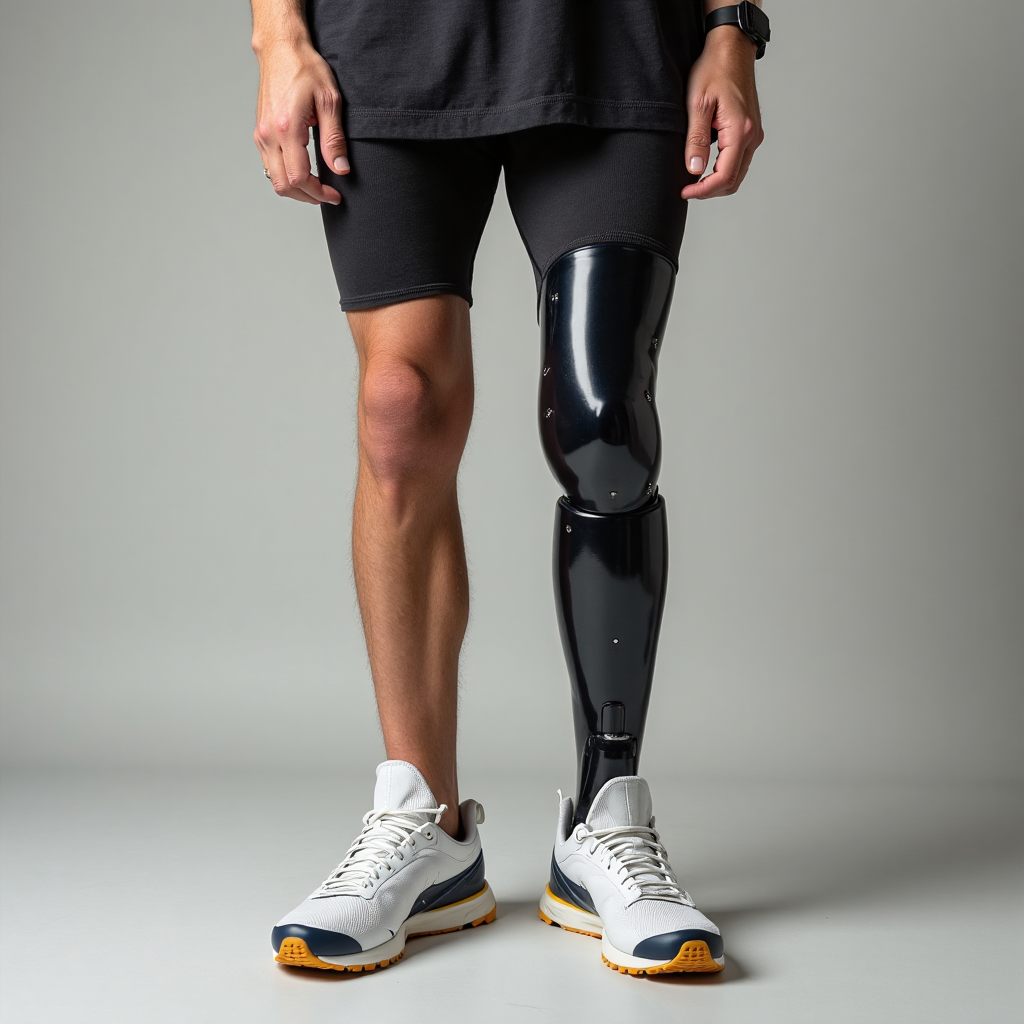
Cultural Symbolism And Athletic Identity – The Look Of Commitment
Tight sportswear has become a cultural symbol of athletic dedication. Loose clothing may suggest casual or recreational intent. The visual language of tight gear reflects commitment and focus. Athletes often choose snug apparel to embody their identity and values. This symbolism influences how others perceive them and how they perceive themselves. Tight clothing becomes part of the athlete’s story. It’s worn not just for function but for meaning. The cultural resonance of compression wear extends into media, branding, and representation. It’s a visual shorthand for intensity and purpose. Athletes use tight gear to express their role and aspirations.
Symbolic And Cultural Impact Of Tight Gear
- Represents discipline and athletic commitment
- Signals elite performance and professionalism
- Differentiates serious athletes from casual participants
- Embodies personal and team identity
- Influences perception and self-image
- Becomes part of the athlete’s narrative
- Used in media and branding to convey intensity
- Reflects values and aspirations
- Adds symbolic depth to functional gear
- Strengthens cultural connection to sport
Reduced Skin Irritation And Friction – Seamless Comfort In Motion
Tight sportswear is often designed with flat seams or seamless construction, reducing the risk of skin irritation. During repetitive motion, loose garments may rub against the skin, causing chafing or discomfort. Compression gear stays close to the body, minimizing friction and hotspots. This is especially important in endurance sports like running, cycling, or rowing. Athletes benefit from gear that supports long sessions without distraction. Tight clothing also reduces the need for additional protective layers or bandages. Loose garments may shift unpredictably, increasing abrasion risk. Seamless tight gear enhances comfort and allows athletes to focus on performance. It’s not just about fit—it’s about skin health. Athletes with sensitive skin or previous injuries often prefer compression wear. The reduction in irritation supports consistency and confidence. Tight sportswear becomes a protective layer as well as a performance tool.
| Skin Comfort Factor | Tight Gear | Loose Gear |
|---|---|---|
| Seamless Construction | Common | Rare |
| Friction Risk | Low | High |
| Chafing Prevention | Effective | Inconsistent |
| Endurance Suitability | Strong | Moderate |
| Skin Sensitivity Support | High | Low |
Environmental Adaptability And Climate Response – Gear That Adjusts To Conditions
Tight sportswear is engineered to respond to environmental conditions with precision. Technical fabrics in compression gear often include UV protection, thermal regulation, and moisture control. Loose clothing may lack these integrated features, relying instead on layering or external accessories. Tight gear adapts to heat, cold, and humidity through smart design. Athletes training outdoors benefit from gear that adjusts to the climate. Compression wear also resists wind better than loose garments, reducing chill and drag. In wet conditions, tight clothing dries faster and maintains fit. Loose gear may become heavy or clingy when damp. Environmental adaptability supports year-round training and competition. Athletes can rely on tight gear to perform across seasons and terrains. This responsiveness enhances safety and comfort. Tight sportswear becomes part of the athlete’s strategy for managing nature’s variables.
Climate And Environment Adaptation Benefits
- Includes UV protection and thermal regulation
- Responds to heat, cold, and humidity
- Resists wind and reduces chill
- Dries quickly in wet conditions
- Maintains fit and comfort across climates
- Supports outdoor and seasonal training
- Reduces need for external accessories
- Enhances safety in variable environments
- Performs consistently across terrains
- Becomes part of environmental strategy
Improved Circulation And Oxygen Delivery – Physiological Performance Boost
Compression gear enhances circulation, supporting oxygen delivery to working muscles. This physiological benefit improves endurance and reduces fatigue. Tight sportswear applies graduated pressure, encouraging blood flow from extremities to the heart. Loose clothing does not offer this targeted support. Athletes in long-distance sports rely on efficient circulation to maintain pace and power. Tight gear also reduces pooling of blood and swelling during recovery. The improved oxygenation supports cellular repair and energy production. Compression wear becomes a tool for both performance and recovery. Loose garments may hinder these processes by allowing stagnation. The circulatory benefits of tight clothing are backed by sports science and medical research. Athletes feel the difference in stamina and post-session soreness. Tight sportswear supports the body’s internal systems, not just its external movement. It’s a physiological ally in training and competition.
| Circulation Benefit | Tight Gear | Loose Gear |
|---|---|---|
| Oxygen Delivery | Enhanced | Neutral |
| Blood Flow Support | Strong | Weak |
| Swelling Reduction | Effective | Minimal |
| Endurance Enhancement | Noticeable | Limited |
| Recovery Acceleration | Supported | Unsupported |
Minimal Noise And Movement Interference – Silent Efficiency In Action
Tight sportswear reduces noise during movement, supporting focus and stealth in certain sports. Loose garments may be annoying and get caught or rustle or flap, creating auditory distractions. In disciplines like archery, golf, or tactical training, silence matters. Compression gear allows athletes to move quietly and efficiently. This supports concentration and rhythm. Tight clothing also reduces visual distraction from shifting fabric. The streamlined silhouette enhances mental clarity and flow. Athletes report feeling more “in sync” when gear doesn’t interfere with sensory input. Loose garments may break immersion or disrupt timing. Silent efficiency is a subtle but powerful advantage. Tight gear becomes part of the athlete’s sensory environment. It supports internal focus and external performance. The absence of noise and interference strengthens the connection between mind and body. Tight sportswear helps athletes stay present and precise.
Sensory And Movement Efficiency Benefits
- Reduces auditory distractions during motion
- Supports silent movement in precision sports
- Enhances focus and rhythm
- Minimizes visual interference from shifting fabric
- Strengthens sensory immersion and timing
- Encourages internal clarity and flow
- Improves connection between mind and body
- Useful in tactical and stealth disciplines
- Supports mental presence and precision
- Becomes part of sensory performance strategy
Reduced Drag And Enhanced Flow In Water Sports – Hydrodynamic Efficiency
Tight sportswear is essential in aquatic disciplines where drag reduction directly impacts performance. Swimmers, divers, and triathletes rely on compression gear that clings to the body and minimizes resistance. Loose garments create turbulence and slow movement through water. Hydrodynamic efficiency is achieved through sleek design and water-repellent fabrics. Tight gear also prevents ballooning or billowing, which can disrupt rhythm and speed. Athletes report smoother strokes and better glide when wearing snug suits. Compression wear supports muscle engagement and reduces fatigue in water. Loose clothing may absorb water and become heavy, increasing effort. Tight sportswear becomes part of the athlete’s aquatic form. It enhances flow, control, and speed. The hydrodynamic advantage is not just technical—it’s experiential. Tight gear supports peak performance in aquatic environments.
| Hydrodynamic Factor | Tight Gear | Loose Gear |
|---|---|---|
| Drag Reduction | High | Low |
| Water Absorption | Minimal | Significant |
| Flow Efficiency | Enhanced | Disrupted |
| Suit Ballooning Risk | None | High |
| Stroke Rhythm Support | Strong | Weak |

Symbolic Transition From Casual To Competitive – Gear As A Threshold
Tight sportswear often marks the transition from casual activity to competitive intent. Athletes use compression gear to signal a shift in mindset and purpose. Loose clothing may feel relaxed or recreational, while tight gear embodies focus and readiness. This symbolic threshold supports rituals of preparation and performance. Putting on snug apparel becomes part of the athlete’s mental warm-up. It reinforces commitment and seriousness. Tight clothing also differentiates training phases—warm-up, peak effort, and recovery. Athletes use gear to structure their sessions and signal intensity. Loose garments may blur these boundaries, reducing clarity. Compression wear becomes a tool for psychological pacing. It helps athletes move through phases with intention. The symbolism of tight gear supports discipline and progression. It’s not just about what the body wears—it’s about what the mind prepares for. Tight sportswear becomes a marker of transition and growth.
Symbolic Threshold And Mindset Benefits
- Signals shift from casual to competitive intent
- Supports mental warm-up and focus
- Reinforces commitment and seriousness
- Structures training phases with clarity
- Differentiates effort levels and routines
- Encourages psychological pacing and progression
- Becomes part of athlete’s ritual and rhythm
- Reflects growth and transition in sport
- Enhances mental readiness and discipline
- Strengthens symbolic connection to performance
Fashion Expression And Athletic Identity – Style Meets Function
| Fashion Element | Tight Gear | Loose Gear |
|---|---|---|
| Style Integration | High | Moderate |
| Identity Expression | Strong | Casual |
| Cultural Adaptability | Inclusive | Limited |
| Streetwear Influence | Present | Minimal |
| Symbolic Resonance | Deep | Surface |
Tight sportswear has evolved into a fashion statement that blends performance with personal style. Athletes use compression gear to express identity, confidence, and aesthetic preferences. Sleek silhouettes and bold designs reflect discipline and ambition. Fashion-forward tight gear supports visibility and self-expression across diverse communities. Loose clothing may offer casual appeal but lacks the sculpted symbolism of snug apparel. Compression wear bridges the gap between gym functionality and streetwear influence. Designers now incorporate cultural motifs, inclusive sizing, and gender-neutral cuts into tight gear. Fashion in sportswear is no longer secondary—it’s integral to how athletes present themselves. Tight clothing becomes a canvas for storytelling, pride, and representation. The fusion of fashion and function elevates tight gear beyond utility.
Athletic Trends And Cultural Shifts – Compression In The Spotlight
- Compression wear dominates influencer and athlete wardrobes across digital platforms
- Tight gear reflects a shift toward performance-focused aesthetics
- Loose clothing is increasingly reserved for recovery or casual wear
- Social media amplifies the visibility of sleek, sculpted athletic silhouettes
- Tight sportswear aligns with the rise of hybrid training and functional fitness
- Brands now prioritize compression lines in seasonal releases
- Cultural narratives around discipline and intensity favor tight gear
- Tight clothing is featured in both elite and recreational athletic campaigns
- The trend reflects a merging of sport, fashion, and identity
- Compression wear is no longer niche—it’s mainstream
Tight sportswear has become a central figure in contemporary athletic trends. Influencers, trainers, and athletes showcase compression gear across digital platforms, reinforcing its cultural relevance. The rise of body-positive fitness and hybrid training styles has elevated tight gear as both a functional and symbolic choice. Loose clothing, while still present, is increasingly associated with rest or casual movement. Compression wear reflects a broader shift toward intentionality, discipline, and aesthetic clarity. Brands now lead with tight silhouettes in seasonal collections, responding to demand for gear that performs and represents. The trend is not just visual—it’s ideological. Athletes wear tight gear to signal focus, readiness, and belonging. This cultural momentum continues to reshape how sportswear is designed, marketed, and worn.
Technology And Fabric Innovation – Smart Compression For Smarter Movement
| Innovation Feature | Tight Gear | Loose Gear |
|---|---|---|
| Sensor Integration | Compatible | Limited |
| Thermal Regulation | Advanced | Basic |
| Moisture Management | Engineered | Passive |
| Stretch Memory | High | Low |
| Biometric Feedback | Supported | Unsupported |
Tight sportswear is at the forefront of technological innovation in athletic apparel. Compression garments now incorporate smart textiles that monitor movement, temperature, and hydration. These features support real-time feedback and performance tracking. Loose clothing, by contrast, struggles to maintain consistent contact with the body, limiting its compatibility with wearable tech. Tight gear also benefits from advanced stretch memory, ensuring fit retention and durability. Moisture-wicking and thermal-regulating fabrics enhance comfort across climates. As sportswear evolves, tight garments become platforms for data, insight, and adaptation. They support not just motion but intelligent motion. Athletes using tech-integrated compression wear gain a strategic edge in training and recovery. The fusion of fabric and function marks a new era in sportswear design.
Disability And Movement Support – Compression As A Stabilizing Tool
- Tight gear provides joint and muscle support for athletes with mobility challenges
- Compression wear reduces fatigue and improves circulation for disabled athletes
- Loose clothing may interfere with assistive devices or restrict movement
- Tight garments help maintain posture and alignment during adaptive training
- Compression supports proprioception and body awareness in rehabilitation
- Athletes with disabilities benefit from gear that stays in place and reduces friction
- Tight sportswear integrates well with braces, prosthetics, and mobility aids
- The snug fit enhances confidence and reduces sensory overload
- Compression wear is used in therapeutic settings for pain and swelling management
- Tight gear becomes a tool for empowerment and independence
For athletes with disabilities, tight sportswear offers more than performance—it provides stability, comfort, and control. Compression garments support joints and muscles, reducing fatigue and enhancing circulation. This is especially valuable in adaptive sports and rehabilitation contexts. Loose clothing may shift or bunch, interfering with assistive devices or movement patterns. Tight gear stays in place, integrates seamlessly with prosthetics and braces, and reduces friction. It also enhances proprioception, helping athletes maintain awareness and alignment. The psychological benefits—confidence, focus, and reduced sensory distraction—are equally important. Compression wear becomes a tool for empowerment, enabling athletes to train, compete, and recover with greater independence and ease.
Disability And Sensory Regulation – Clothing That Calms And Supports
| Sensory Benefit | Tight Gear | Loose Gear |
|---|---|---|
| Pressure Modulation | Therapeutic | Absent |
| Sensory Overload Risk | Reduced | Elevated |
| Fit Consistency | Reliable | Variable |
| Integration With Aids | Seamless | Disruptive |
| Emotional Comfort | High | Moderate |
Tight sportswear plays a unique role in sensory regulation for athletes with disabilities. The gentle pressure of compression garments can have a calming effect, reducing anxiety and sensory overload. Loose clothing, while comfortable for some, may introduce unpredictability in texture and fit. Tight gear offers consistency, which is essential for athletes with sensory sensitivities. It also integrates smoothly with mobility aids, reducing interference and discomfort. Emotional comfort is a key factor—athletes often report feeling more secure and focused in snug apparel. Compression wear supports both physical and psychological well-being. It becomes part of a sensory strategy, helping athletes manage stimulation and maintain clarity during training and competition.
Disability And Representation In Sportswear – Inclusive Design Matters
- Brands are expanding compression lines to include adaptive and inclusive sizing
- Tight gear supports visibility and representation for disabled athletes
- Loose clothing often lacks the structural support needed for adaptive movement
- Compression wear is featured in inclusive campaigns and athlete spotlights
- Tight garments help normalize disability in performance contexts
- Representation in sportswear design fosters pride and participation
- Disabled athletes benefit from gear that reflects their strength and identity
- Inclusive tight gear supports both function and symbolism
- Compression wear is used to challenge stereotypes and expand athletic narratives
- Tight sportswear becomes a medium for visibility, dignity, and belonging
Tight sportswear is increasingly recognized as a vehicle for representation and inclusion. Brands are designing compression gear that accommodates diverse body types, mobility needs, and aesthetic preferences. This shift reflects a broader commitment to visibility and dignity for disabled athletes. Loose clothing may lack the structural support or symbolic clarity needed in adaptive sports. Tight gear, by contrast, offers both function and form. It helps normalize disability in performance contexts, showcasing strength, discipline, and pride. Inclusive campaigns featuring disabled athletes in compression wear challenge stereotypes and expand the narrative of who gets to be seen as powerful. Tight sportswear becomes a medium for belonging, empowerment, and cultural change.
Improved Safety In High-Speed Sports – Gear That Stays Put
In high-speed disciplines like cycling, skiing, or motorsport, tight sportswear enhances safety by staying securely in place. Loose garments may flap, shift, or snag, increasing risk during rapid movement. Compression gear reduces drag and maintains consistent coverage. It also integrates well with protective equipment like helmets, pads, or harnesses. Tight clothing minimizes distraction and supports aerodynamic posture. Athletes rely on gear that won’t interfere with visibility or control. Loose garments may obscure vision or catch on gear, leading to accidents. Tight sportswear becomes part of the safety system. It supports precision, stability, and awareness. In extreme environments, gear reliability is critical. Compression wear offers that reliability through fit and function. Safety is not just about protection—it’s about prevention. Tight gear helps athletes stay focused and secure at high speeds.
| Safety Factor In Speed Sports | Tight Gear | Loose Gear |
|---|---|---|
| Gear Stability | High | Low |
| Equipment Integration | Seamless | Disruptive |
| Drag Management | Effective | Problematic |
| Visibility Support | Clear | Obstructed |
| Accident Risk | Reduced | Increased |
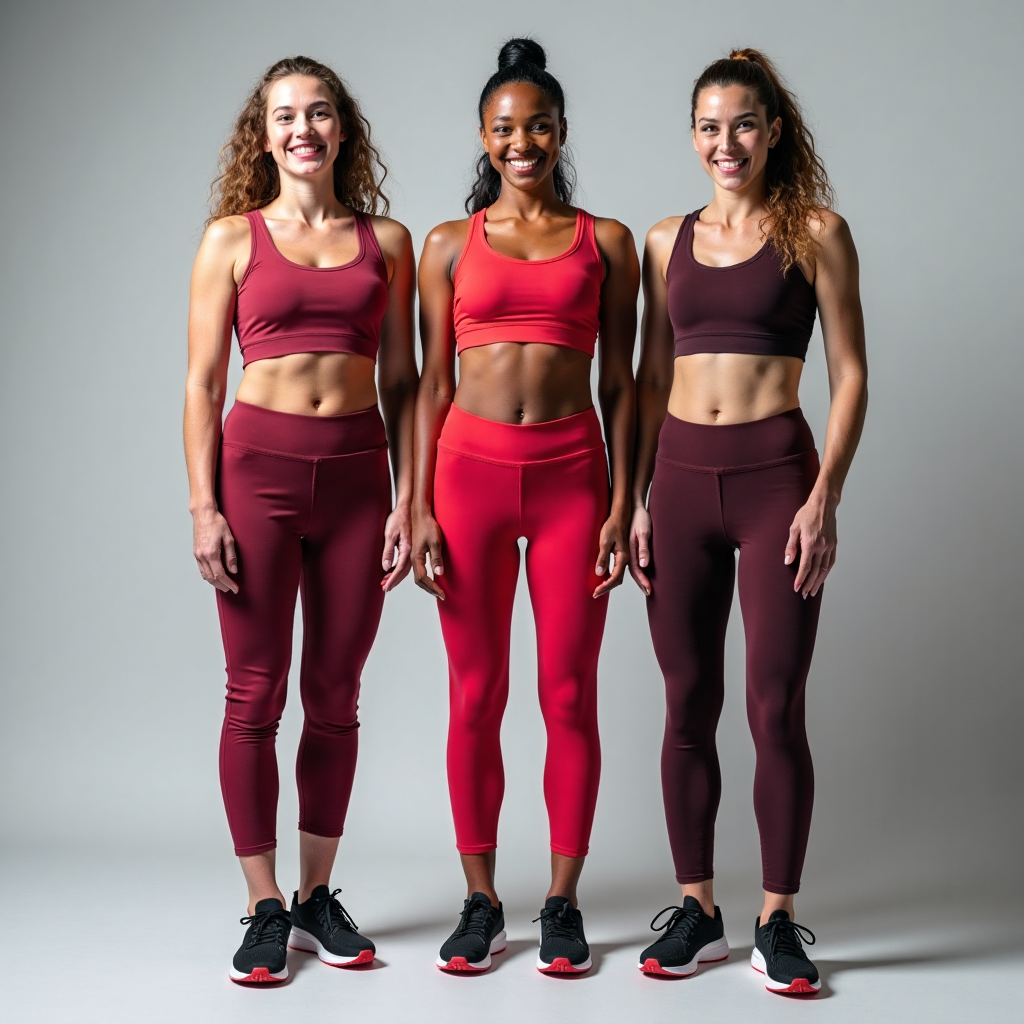
Sportswear Emotions – Clothing As A Personal Anchor
Tight sportswear often carries emotional significance for athletes. It becomes part of their ritual, identity, and memory. The act of putting on compression gear can evoke focus, pride, and anticipation. Loose clothing may feel neutral or disconnected from performance. Tight gear, by contrast, holds symbolic weight. It’s worn during breakthroughs, competitions, and personal milestones. Athletes associate it with effort, resilience, and transformation. This emotional connection strengthens motivation and consistency. Tight clothing becomes a personal anchor in the athletic journey. It reflects values, goals, and growth. The ritual of wearing it supports mental clarity and emotional grounding. Loose garments may lack this resonance. Compression wear becomes more than gear—it becomes story. Athletes carry their experiences in the fabric. The emotional depth adds meaning to motion. Tight sportswear supports not just the body, but the spirit.
Emotional And Ritual Benefits Of Tight Gear
- Evokes pride, focus, and anticipation
- Worn during milestones and breakthroughs
- Reflects personal values and goals
- Strengthens motivation and consistency
- Supports mental clarity and grounding
- Becomes part of athlete’s identity and story
- Holds symbolic weight in performance
- Encourages emotional resilience and reflection
- Adds meaning to movement and effort
- Anchors the athlete in ritual and rhythm
Conclusion – Tight Sportswear As A Strategic Choice
Across disciplines, climates, and body types, tight sportswear offers a layered set of advantages. From physiological support to psychological readiness, it enhances performance, recovery, and identity. While loose clothing has its place in comfort and casual movement, compression gear provides targeted benefits that align with serious athletic goals. The decision is not binary—it’s contextual. Athletes should consider sport type, environment, personal needs, and symbolic resonance when choosing gear. Tight sportswear is more than a garment—it’s a tool, a signal, and a strategy. It reflects the evolving relationship between body, movement, and meaning. As technology and inclusivity shape the future of athletic wear, compression gear stands out as a responsive, empowering choice. It supports not just motion, but intention. In the debate between tight and loose, the edge often belongs to the snug.
Join The Discussion – What Does Your Gear Say About You
Do you wear tight sportswear for comfort or fashion? What does tight sportswear do for performance, recovery, or identity? How does your gear reflect your goals and values?
#CompressionEdge #AthleteGearWisdom #TightFitBenefits #SportswearStrategy #PerformanceAndIdentity #TrainingTools #MindBodyGear #RecoveryWear #SymbolicMotion #AthleticClarity
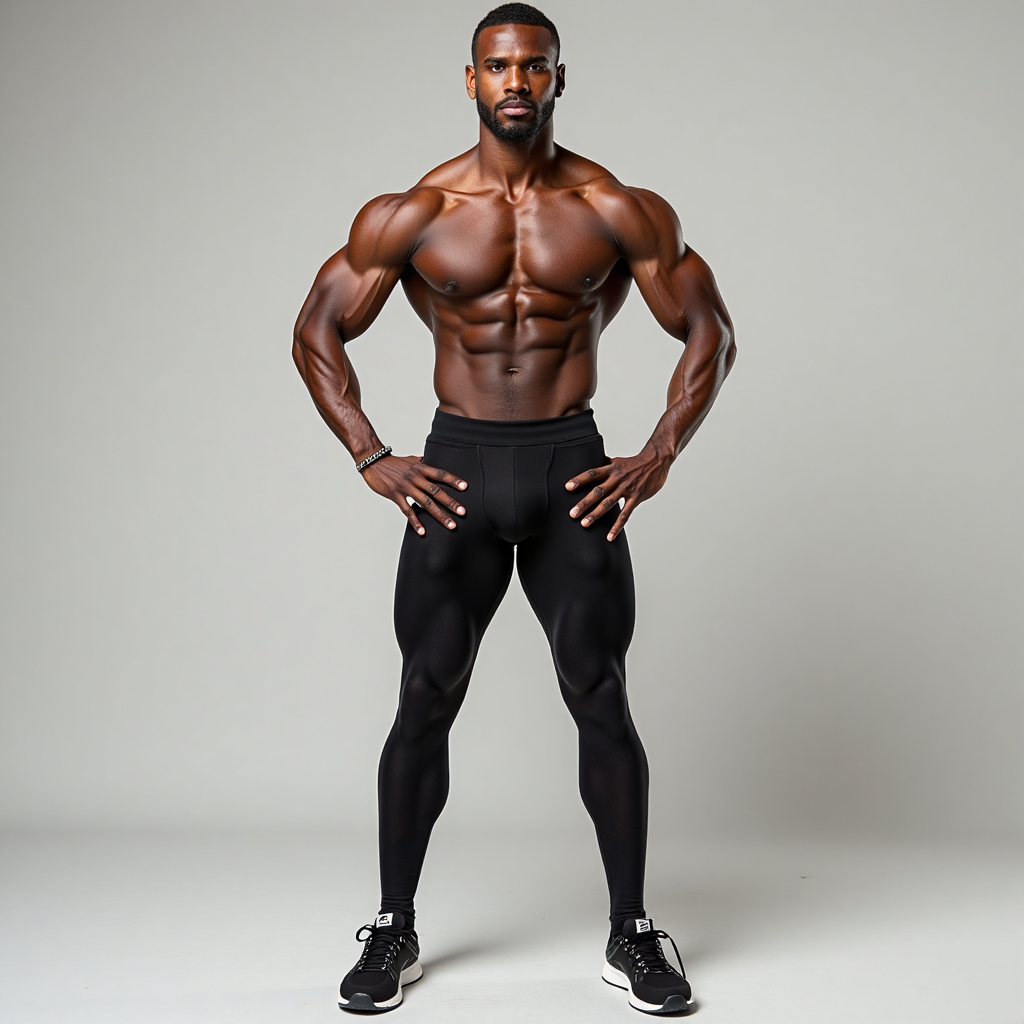
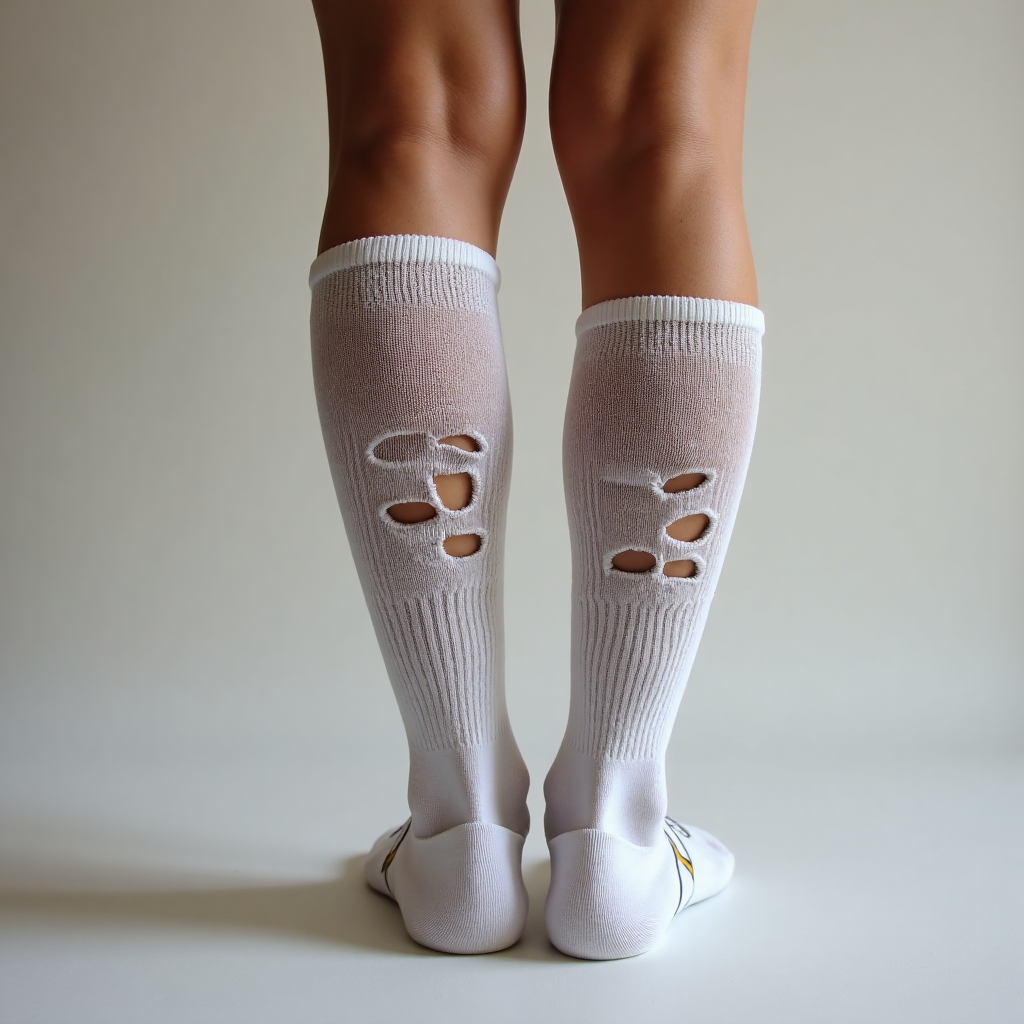






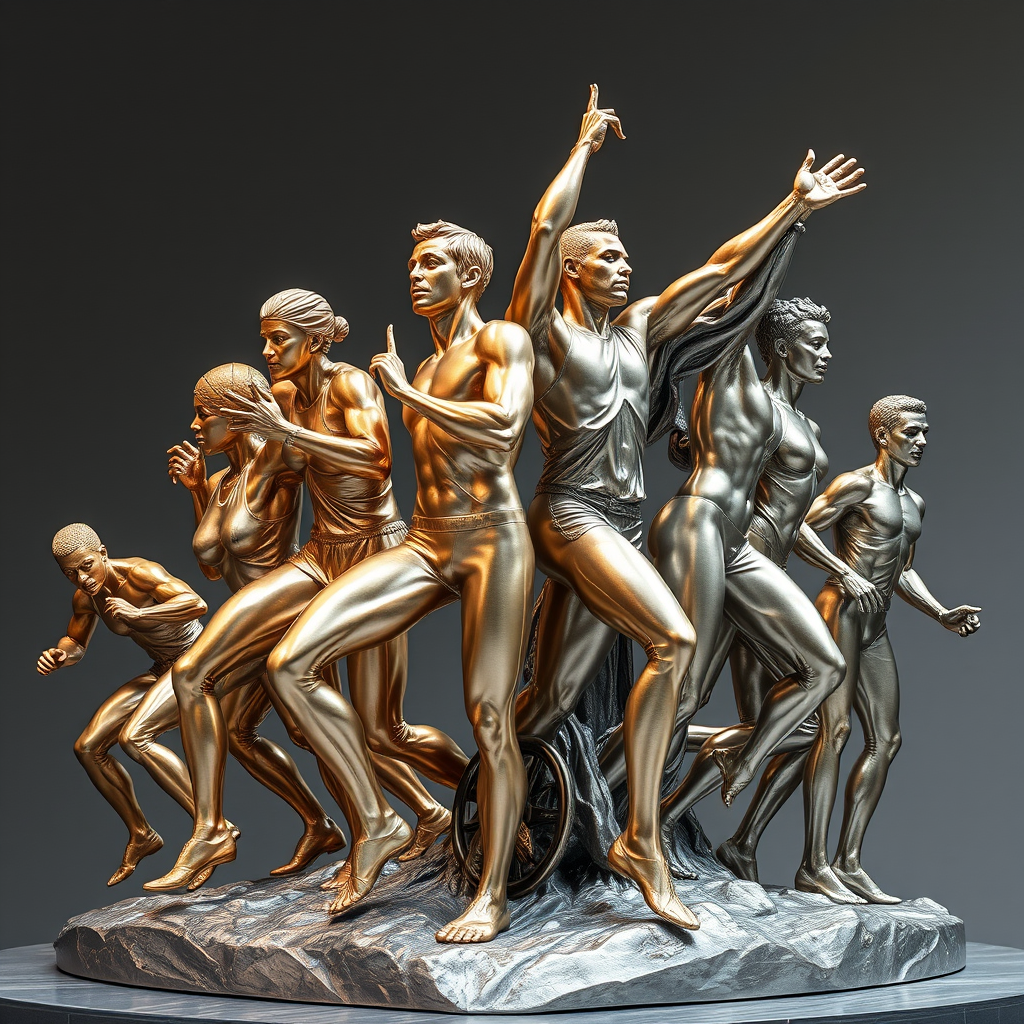

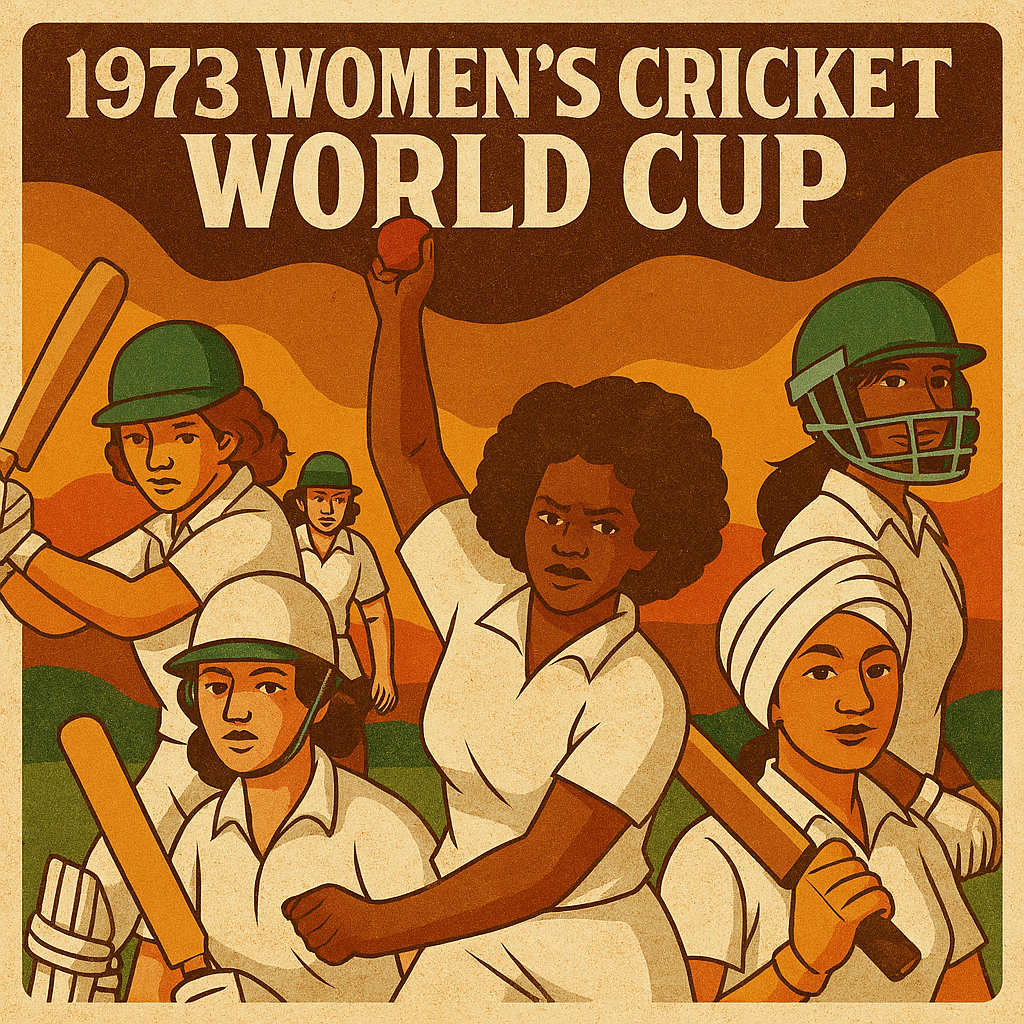
Leave a Reply